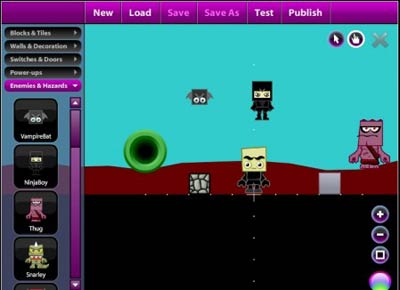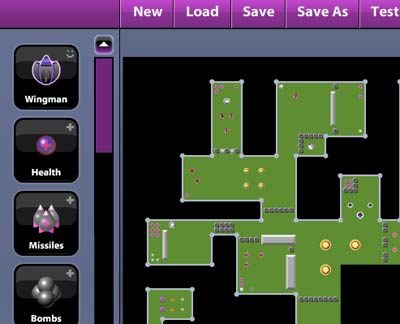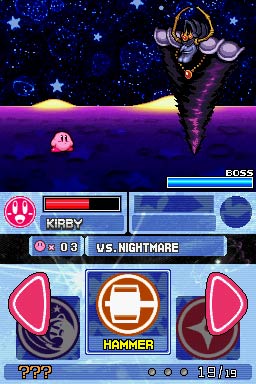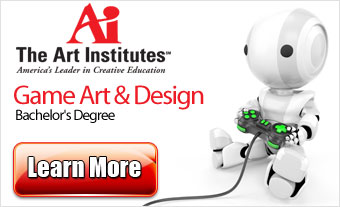
How to design your own video game
A question we get asked a lot is "How do you pitch your own video game idea? Is it possible to do so?"The quick answer is...no. It's not possible. Not from the outside. You need to work your way into the industry first before your ideas will be taken seriously. Not to mention all the potential legal ramifications that a video game studio could face if they even hear your pitch and are al-ready developing something similar they could be faced with lawsuits, that's why most game companies don't even read pitches.
So if you have a great idea for a video game your best option is to design your own video game. Have a low budget demo of your game developed first.

As you move into production on a game, you need to combine at least some understanding in game design, programming and art. A designer needs these skills while communicating with other members of the design team.
To develop your game design skills, you may wish to examine the operations of war games, board games and role-playing games. Start with role-playing games from Wizards of the Coast or White Wolf. In addition, you should know the card game, MAGIC: THE GATHERING. Take a look at Avalon Hill's war games or real-time simulations like WARCRAFT or STAR-CRAFT or RISK.
After exploring these games, you should have some ideas for your new games system mechanics. After studying these games, you will also know intuitively what makes a game enjoyable. You'll know the popular games and how they work. It's the same path a film student takes while studying the classics, or an aspiring novelist follows before tackling his or her own masterpiece. You can also ask others what games they like to determine if your tastes are on target.
When discussing other games with fellow professionals and experienced players, make sure you hit all the key points and get whatever insights they have to offer. Tackle the following key is-sues:
- Characters - As mentioned earlier, every good game needs interesting characters, even if that character is the player's first person perspective (once called an Avatar). Human involvement and identification, even if seemingly invisible, makes a game more involving for a player. We'll get more into character in subsequent chapters.
- Originality - A good game will not be a carbon copy of another game, even if it's a sequel to a pre-existing hit. Even if your game uses a similar engine as another, it should set itself apart in levels, art design, complexity and character.
- Playability - Make the game possible to play and well balanced between ease and difficulty. Players are easily discouraged by early failures, and may not want to play again. Start with easy levels that allow the player to learn the interface and game concepts at a comfortable pace.
- Re-playability - The game shouldn't lose the players interest after one play. There should be a degree of randomness and interactivity to retain the player's interest in repeat play and make the game seem consistently new.
- User Interface - Whether your game requires a mouse, keyboard, controller or joystick, try to make the interface so easy to use and adapt to that it more or less becomes invisible.

Now, as we move into part two of this examination, we'll take a more indepth look at the pros-pects of game development....
During the process of developing the game, a designer must keep his or her two feet in two dif-ferent realms; the artistic world and the technical world. Just as a designer doesn't want his or her vision to come up short of what the latest technology can produce, it's also a minor tragedy to burn that precious creative energy on some grand vision that can'[t possibly be realized with even the most advanced game engine.
A game must have a clearly defined goal, most often stated on how it will effect the player. The goal must establish the visions, emotions and challenges it will produce in the player. The im-portance of a goal does not become obvious until later in the game design process. Everything that the game designer wants to do requires limited memory. Thus, the designer must make trade-offs. Some game features can be included, and some must be rejected. If the goal is clear, that can help make such difficult decisions easier.
With a goal and genre in mind, the next step is to immerse you in the topic. Read everything you can on the genre and subject matter of the game. If you are making a war game, you had better be able to match wits with a West Point cadet! If you are designing a flight simulator, you'd best be able to take the controls of a jet liner if the pilot gets food poisoning!
Once you are as educated and prepared as possible, armed with a well-researched design docu-ment, you can now begin the actual design phase. Your primary goal in the design phase is to create the outlines of the game structure. The game structure is the internal architecture of rela-tionships that define the obstacles the player must overcome in the course of the game.
The central problem in designing the game structure is figuring out how to recreate the fantasy of the goal into a workable technological structure. The game designer must identify some key element from the topic environment and build the game around that key element. The most ob-vious examples are fighting games and first-person shooters. In a fighting game, martial arts skills and moves are the key element. In shooters, firepower and accuracy are essential.
The key element must allow the player to express himself, to do the things that he wants or needs to do to experience the fantasy of the game. In a first person shooter, the player needs complete control of his or her movement and weapons to live the fantasy fully.

The most important issue is to decide if the design satisfies the original design goals, you created earlier in the process. Does your game recreate reality as you intended? Did you make your game unique? Are your characters interesting? If the design passes this crucial test, move on.
Examine the stability of the game. Is your game out of balance (too easy or too difficult)? Are there any circumstances in which the game gets out of control? If so, re-examine the structure carefully with an eye to structural changes that will stabilize the game.
Also, look through the game and probe the design for shortcuts to an easy win. A player who can find a way to guarantee victory with little effort on his part will not derive the full benefit of your game. Worse still, that player will toss your game aside early. Then, he or she will tell eve-ryone how to beat your game early, and everyone told will also toss your game aside! Soon, your player base will dry up and your game will lose its market!
Once you predicted and defeated any potential design disasters, you can move to programming phase. I am not a programmer. Most of the best designers I know are not necessarily top pro-grammers, either. Therefore, we would pass our designs on to a lead programmer and program-ming department. By working with them in a team environment, the high-tech guts of a game together. Good programmers will watch for programming bugs and solve them as you move through game construction. It's what they do!
Once programming is complete and the game is up and running on a PC system, development becomes a question of playing the game repeatedly to find weaknesses and malfunctions. Play testing can employ one person or a team of players who approach the game from every angle to see where it breaks down. It's the next step in de-bugging a game design. Play testing is a process that yields information used to polish and refine the game design. The process often re-veals design and programming problems that require correction.
If your initial design was well developed, it won't face too many of these crises. The game should just need some tweaks and polishes. Tuning the game will take many weeks.
Since it is considered a key entry-level job in the game industry, designers need to choose play-testers carefully. You need play-testers who a familiarity with games, play-testers who can iden-tify genuine game problems. Ideally, the play-testers want be game designers.
Schedule interviews with the play-testers after they played the game for some time. Come to the interview prepared with a set of standard questions that you ask all play-testers. Don't lead the play-tester's answers and don't get upset of they find problems! You may wish to encourage the play-tester to be negative and look too closely for flaws. It can only serve to make your game better.
Play-testers' criticisms are difficult to evaluate. Some seem reasonable, but would require major software rebuilds that are simply not reasonable. But, it doesn't cost you anything to listen! I once read this formula: "Do not hesitate to reject 90% of the suggestions made. The remaining 10% are right; waste no time implementing them." How do you know the difference? That comes with experience!
The final stage of the design cycle is devoted to polishing the game. The polishing stage goes on along with the final stages of play testing. Oscar Wilde once suggested that "...a work of art is not completed. It is abandoned." In other words, an artist can add paint to a canvas, or a writer can change a word here or there forever. The piece of art is actually only finished when the artist becomes so tired of working on it that he or she walks away.
That doesn't work with games. As the designer, you must see the project through to the end. At the end of the long design road, the designer has been working on the game for a long time, and the luster of the new design wears off. The play-testers love it, the publisher loves it and wants it right now; but the designer hates it due to sheer boredom. Buck up and press forward. Go the distance. Use whatever other cliché you need! Keep testing the game, fine-tuning it, and adding tiny embellishments to it.
Simply exhaust yourself to make your as good as you can possibly imagine.




